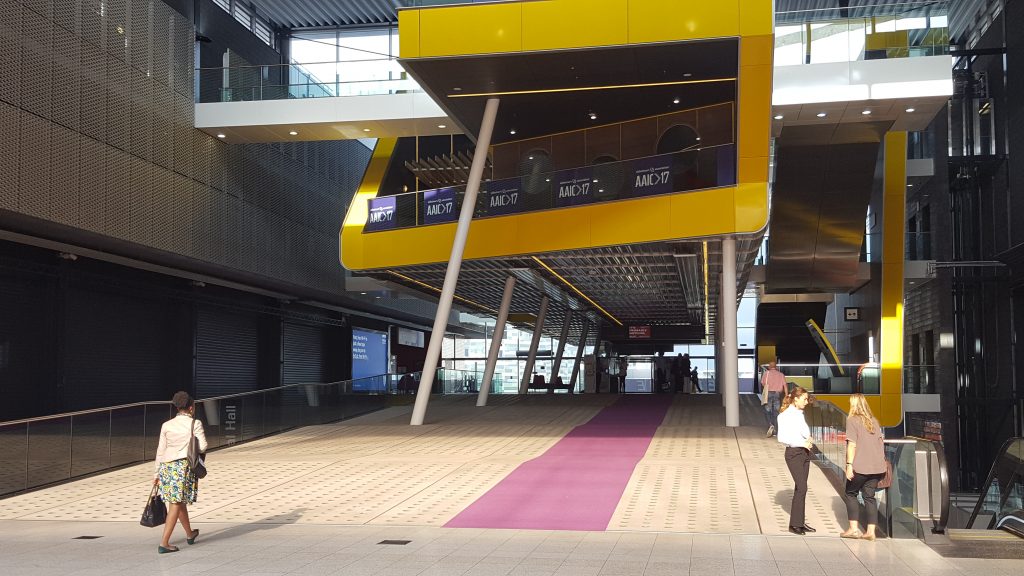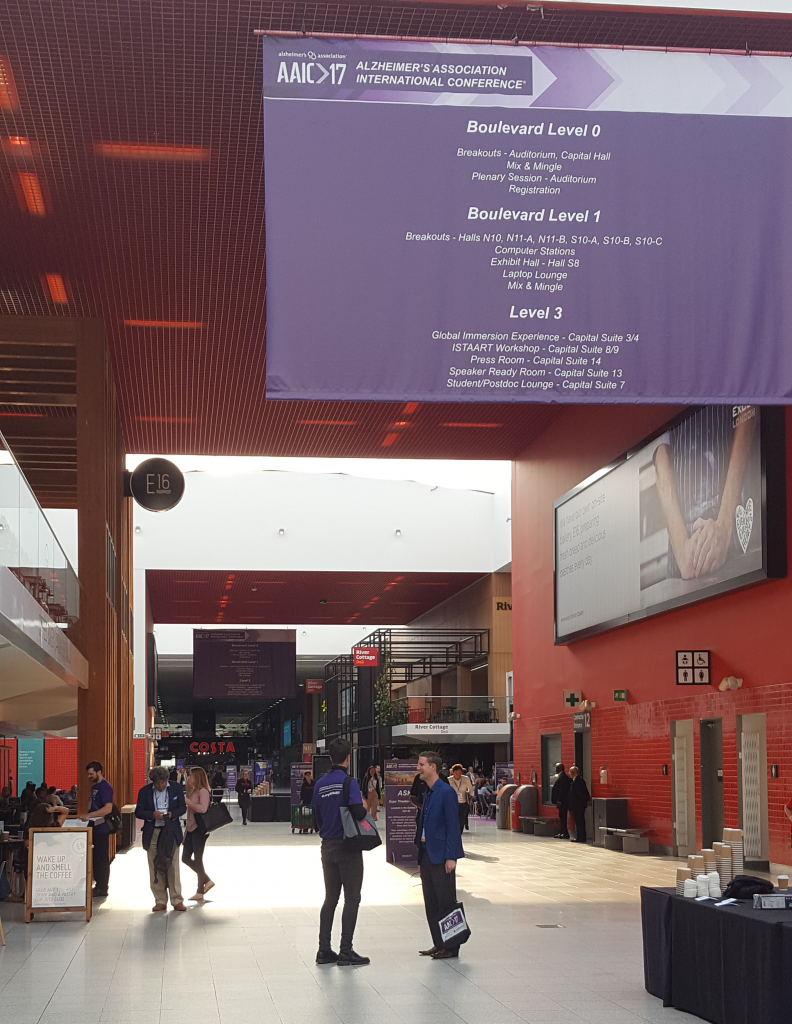So, it’s the last full day of events at AAIC 2017. And I’m still finding new insights across the whole breadth of dementia. The day started with a session on novel biomarkers, and I learnt that one of the commonly used spinal fluid makers (neurofilament light chain) is just as good when measured in blood. This might save a whole lot of lumbar punctures.
From there I had a wander round the posters, finding out about the cross-over between tau pathology in dementia and traumatic brain injury, the effect of the MIND diet on slowing cognitive decline in middle age, the epidemiology of dementia in China, and potential new treatments for blocking tau oligomers. I’m not sure I could have imagined four more different topics!

A highlight of the conference for me has been getting to know people that I have only briefly met, or contacted via email in the past. I had lunch with the wonderful and lovely Maëlenn Guerchet who wrote a great blog for us on dementia in sub-saharan Africa. It was great to get to know her and her fantastic work with the 10/66 project better.
The two plenary sessions covered the role of Astrocytes in Alzheimer’s disease by Won-Suk Chung, and the transmissability and toxicity of tau by Virginia Lee. Both were high level talks covering many years of work. Virginia’s talk included a few comments on the interaction between tau and astrocytes. The overlap between fields has been a common theme this week. And this was no more evident than in the final session of the day on the interaction between tau and other proteins. It was fascinating to hear just how many patients (40%) may have multiple pathologies when you look under the microscope, and how tau and beta-amyloid might work together to cause synaptic loss and toxicity. It was a reminder that finding a treatment for any single dementia remains a complex challenge with hurdles still to be overcome.
During these blogs I have mentioned a couple of large datasets. One of the most advanced and ambitious is the Dementia Platform UK. A workshop this afternoon covered genetic, imaging, electronic patient record and wearables data. All this data from hundreds of cohorts (including the 100,000 from the UK brain bank study) have been made available through a single portal, with associated servers for computational analysis. The plan is to harmonise the structure of this data with similar initiaitives in Europe, the US, South Korea and China. If you’re a data geek, I would definitely check it out.
And finally, I will leave attempt to give you some estimate of the scale of this meeting. There were 5600 participants at the meeting and I have only been able to bring you a small snapshot of all the talks and announcements. You may have seen headlines on the links between stress and dementia, sleep apnoea and dementia and a recent failed trial. I simply wasn’t at those sessions to be able to report on them! I include a couple of images of the Excel Centre where the meeting was held which is simply enormous. To give you something of the scale, it is served by 3 Docklands Light Railway Stations, and takes around 5 minutes to walk from one end to the other.

There is one more half day of talks tomorrow. Unfortunately I’ll only be attending the first session, as I am at the World Dementia Council on behalf of WYLD. If you’ve enjoyed the blogs and haven’t done so yet, please follow WYLD on twitter @wyldementia and sign up through the website to join the network. We have an active slack group, and there is the opportunity to network online and at various meetings throughout the world and throughout the year. I hope to meet you all soon!
Timothy Rittman – WYLD Steering Group Member




